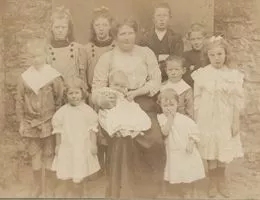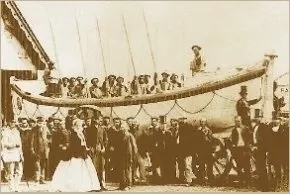1. Definitions and Importance
Ancestry refers to one’s family or ethnic descent.
It plays a crucial role in understanding cultural heritage and identity.
In the U.S., ancestry is often linked with migration patterns, historical events, and societal changes.
2. Sources of Ancestry Information
Census Data: The U.S. Census Bureau collects detailed demographic data, which includes questions about ancestry.
Genealogy Websites: Sites like Ancestry.com, FamilySearch.org, and MyHeritage provide tools and resources for individuals to trace their family history.
DNA Testing Services: Companies like 23andMe and AncestryDNA offer genetic testing to provide insights into one’s ethnic backgrounds and genetic lineage.
3. Major Ancestral Groups in the U.S.
European: A significant portion of the U.S. population reports European ancestry, including Irish, German, Italian, and Polish, among others. This reflects the waves of European immigration, particularly during the 19th and early 20th centuries.
African: African Americans, whose ancestors were brought to the U.S. during the transatlantic slave trade, represent a major ancestral group. Post-slavery migration patterns have also influenced their distribution across the U.S.
Hispanic and Latino: This group includes people from a Spanish-speaking background, primarily from Latin America. Significant growth has been observed in this demographic, influenced by recent immigration trends.
Asian: Asian Americans include individuals of Chinese, Filipino, Indian, Vietnamese, Korean, and Japanese descent, reflecting both old and new immigration patterns.
Native American: This group includes individuals who identify with tribes indigenous to the U.S. They represent a smaller but significant portion of the population, with unique legal and historical status.
4. Trends and Changes
The diversity of the U.S. population has significantly increased over the past decades due to globalization and changing immigration laws.
Intermarriage across different ethnic and racial groups has led to an increase in the number of people identifying with multiple ancestries.
Changing attitudes towards race and ethnicity have affected how people identify and report their ancestry.
5. Implications and Uses of Ancestry Data
Cultural Identity: Ancestry helps individuals connect with their cultural roots and community.
Health: Genetic information related to ancestry can inform individuals about predispositions to certain health conditions.
Sociopolitical Analysis: Ancestry data helps in understanding demographic shifts, voting patterns, and socio-economic stratification.

Conclusion
Understanding ancestry in the U.S. involves looking at a complex interplay of history, migration, and identity. It not only helps individuals trace their personal history but also offers insight into the broader sociocultural and political landscape of the country. Whether for personal interest or scholarly research, the study of ancestry in the U.S. provides a fascinating glimpse into the diverse fabric that makes up the nation.
If you had a different focus in mind or need information on a specific aspect of ancestry research, feel free to ask!


